Public consultation event
Event one - November 2025

Public Consultation Ness Weir II
Statera Energy is grateful to everyone who attended its public consultation events in 2024 and provided valuable feedback. This feedback has been carefully considered, alongside further technical work, to develop updated proposals. The purpose of this exhibition is to share the updated proposals and obtain feedback to help further inform and shape the design for Ness Weir II.
The history of Loch Ness
Loch Ness is an integral part of Scotland’s landscape, known worldwide for its beauty and history. As the largest body of freshwater by volume in the UK, it holds more water than all the lakes in England and Wales combined. At the centre of centuries of history, battles and castles and the persistent tales of a loch monster, Loch Ness has an established place in Scotland’s cultural identity.
Over 200 years ago, the legendary Scottish civil engineer Thomas Telford designed and oversaw the construction of the Caledonian Canal. He created an east to west transportation route across Scotland along the Great Glen, including Loch Ness, to improve transportation and trade in Scotland, encourage development in the Highlands, and provide a safer route for ships. It included a series of locks and canals, as well as bridges and aqueducts, and is still in use today.
Today, Loch Ness is just as important as it ever was, lying at the centre of the Highlands’ economy, providing jobs in a range of sectors including tourism, green energy, and utilities.

Thomas Telford
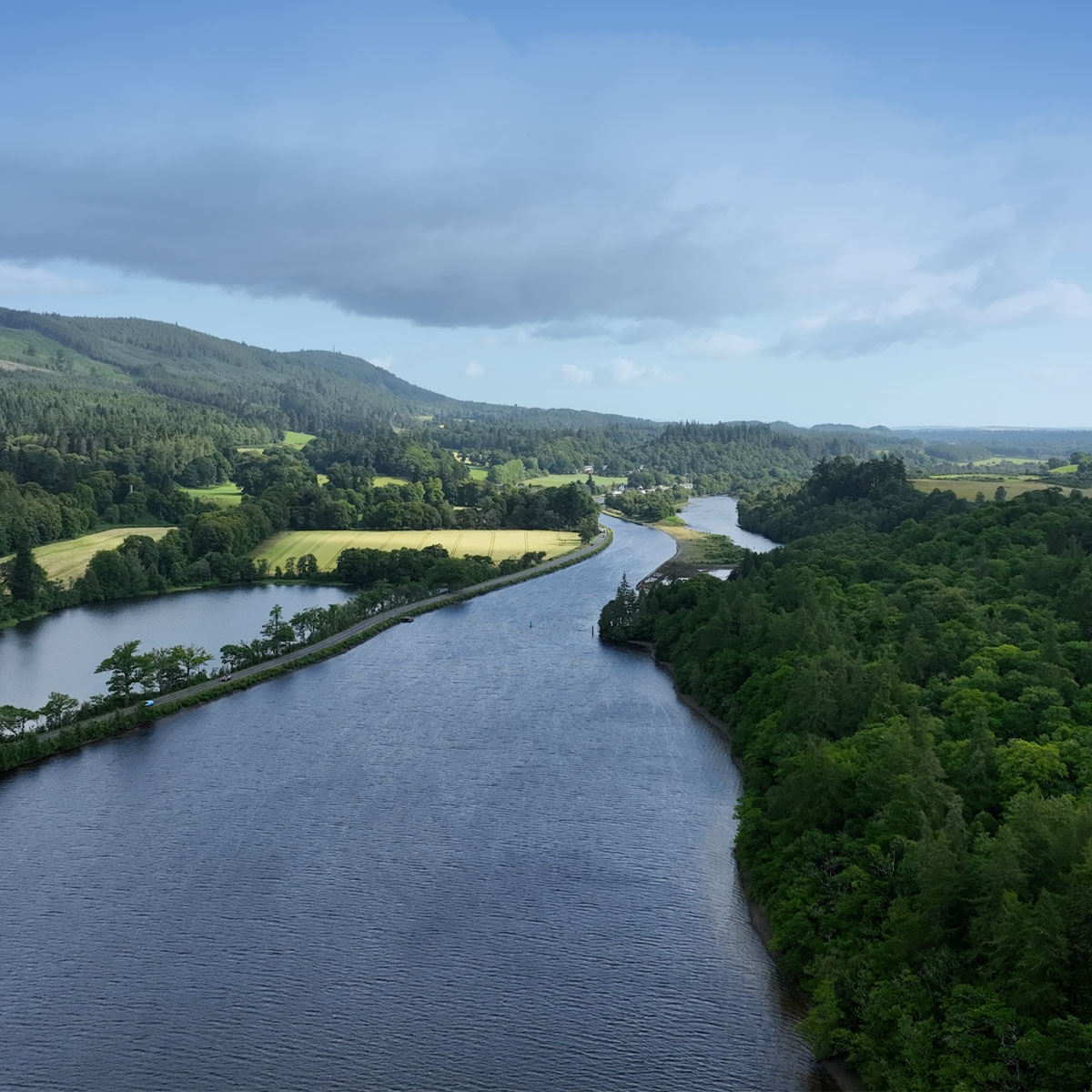
Caledonian Canal and River Ness
Introducing Ness Weir
A key element of the Caledonian Canal design is Ness Weir (also known as ‘Dochfour Weir’), which is the point where Loch Dochfour and the River Ness come together. Ness Weir was designed to ensure that the water levels through Loch Ness and into the Caledonian Canal are maintained at a level which allows boats to transit through the canal. Water levels in Loch Ness are controlled by Ness Weir via existing sluice gates.
What is a weir?
A weir is a low-lying structure across a waterway, creating a barrier which has the effect of raising water levels on the upstream side. Water can then spill over the weir crest and water levels can be controlled with a mechanical structure such as sluice gates or tilting weirs.

Why is this Project Needed?
Statera Energy is proposing an upgrade to the existing weir structure, to help unlock the potential of pumped storage hydro in the Highlands while safeguarding the navigability of the Caledonian Canal. More dramatic seasonal changes in the weather are increasing the probability of lower water levels in Loch Ness, as the effects of climate change become clearer, these low water events are likely to increase in the future.
Why water resilience on Loch Ness matters
Low water levels on Loch Ness can have far-reaching consequences for the region. They impact not only the viability of pumped storage hydro, a cornerstone of Scotland’s clean energy transition, but also affect local businesses, leisure users, the Caledonian Canal, surrounding waterways, and loch environment.
While Statera’s Loch Kemp Storage project remains viable without changes to the existing weir, long-term projections show increasing water stress within the Loch Ness catchment. This trend is expected to continue regardless of additional pumped storage developments.
Water resilience is essential. It underpins the success of clean energy technologies like pumped storage hydro, which are ideally suited to the Highland landscape. By ensuring sustainable water levels, Statera can support Scotland’s journey to net zero while protecting the communities, ecosystems, and industries that rely on Loch Ness.
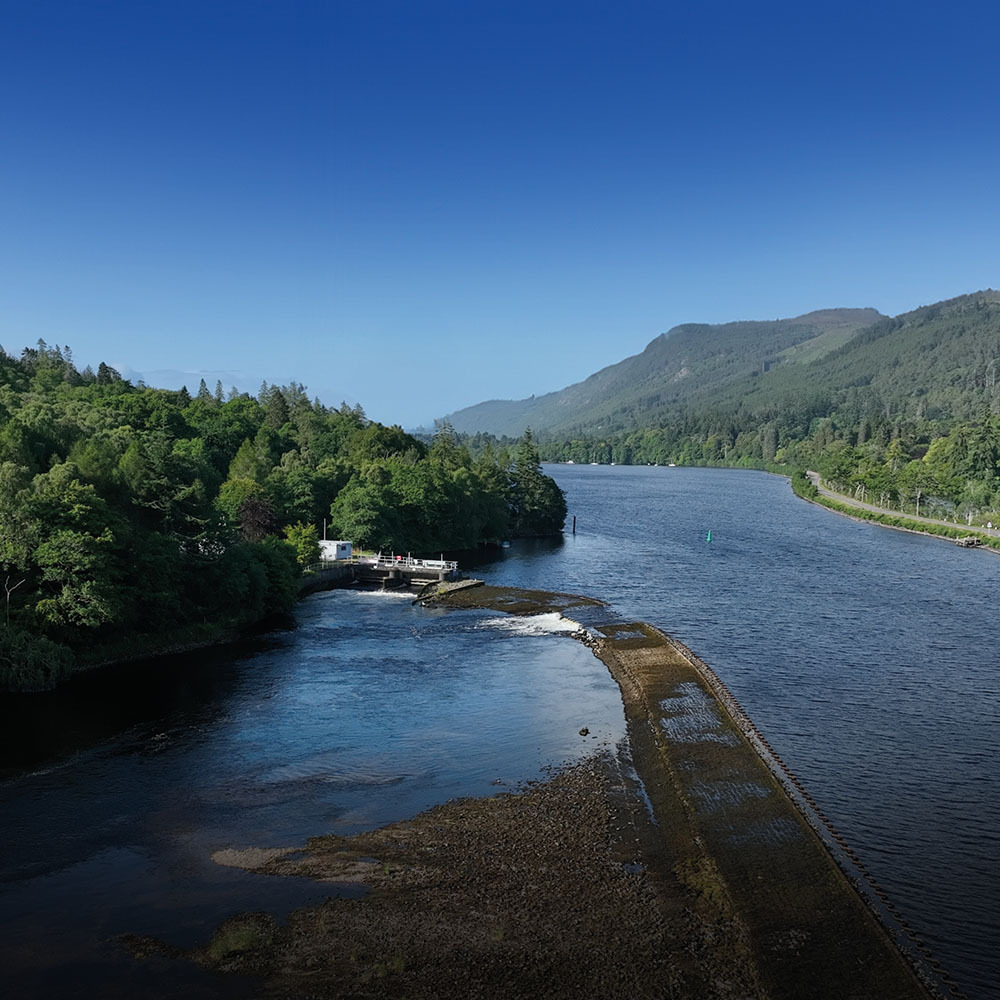
The existing Ness Weir
Understanding water levels in the Loch Ness catchment
The Loch Ness catchment area is a vast and complex hydrological system, supporting a wide range of users including communities, businesses, and energy infrastructure, most notably pumped storage hydro. This system relies on consistent water availability to function effectively.
Over the past 40 years, the Scottish Environmental Protection Agency (SEPA) has carefully monitored how much water flows into the Loch Ness catchment. Their data shows that water levels are changing, with more extreme events predicted based on the Regional Climate Models (RCM) from the Met Office’s UK Climate Projections (UKCP). The Ness catchment is likely to experience wetter winters and drier summers, thus increasing the likelihood of water stress.
On the graph, the white line shows the historic average monthly flow rate (from 1981 to 2022), and the red line shows what to expect in the future if no changes are made. The shaded area between the two lines highlights the difference in water flow showing how much lower summer flows could be if no action is taken.


Ness Weir II Our Proposals
Statera Energy is grateful to everyone who attended its consultation events last year. The feedback captured has played a vital role in shaping the updated proposals for Ness Weir II. These revised plans are more robust, sustainable, and better aligned with both community values and environmental priorities.
Statera Energy is proposing an upgrade to the existing Ness Weir (also known as Dochfour Weir) structure as part of a wider initiative to unlock the potential of pumped storage hydro in the Highlands. This development is designed to safeguard the navigability of the Caledonian Canal, improving fish passage and offering greater flood resilience in a changing climate. By enhancing the weir’s functionality, Statera aims to support the long-term resilience of the region’s water infrastructure in the face of climate change.
The modified weir will improve the operational control of Loch Ness by reducing the chance of low water levels occurring, particularly during periods of water scarcity, while at the same time reducing flood risk downstream in the River Ness. The normal operating range of Loch Ness will remain within its historical range, i.e. between the median annual maximum and median annual minimum.
Statera Energy is willing to play a major part in delivering the structure if consented. However, it is also recognised that there has long been a desire to take a collaborative approach to water levels in the Great Glen, working alongside all stakeholders who have an interest in this. Statera sees the management of this asset as best held by an independent strategic body. The company is committed to working with all stakeholders involved to deliver a long-term solution on this matter.
The control system planned for the project will use a pre-release and flood forecasting system to predict and manage high water events, such as predicted high rainfall or snow melt, and will also use planned operational information from the pumped storage hydro schemes. This means the control gates can be gradually lowered to reduce water levels in Loch Ness and Loch Dochfour in advance of any planned or forecasted event.
The proposed upgrades will deliver significant benefits for the region, supporting current and future pumped storage hydro schemes, enhancing climate resilience, reducing flood risk, and protecting the long-term usability of the Caledonian Canal.
The proposed modifications include:
Upgrading the existing weir
Raise the crest level of both the service weir and waste weir to 16.2 metres Above Ordnance Datum (mAOD). This helps improve water level management and resilience.
Installation of new control structures
New control gates will be added:
- At the Ness Gates (within the service weir).
- At the Dochgarroch Embankment (east), known as the Dochgarroch Gates.
These upgrades will enhance flow control and operational flexibility.
Ecological enhancements
New fish passes will be constructed to support aquatic biodiversity, allowing fish to migrate more freely and improving the ecological health of the waterway.
Embankment and hydropower improvements
Targeted modifications to the eastern and western Dochgarroch embankments, including:
- Localised regrading and raising to ensure a consistent crest height.
- The potential for a small-scale low-head hydropower scheme, within the proposed new control structure, contributing to renewable energy generation.

Plan for the proposed Ness Weir II modifications

Key Design Updates Based on Feedback
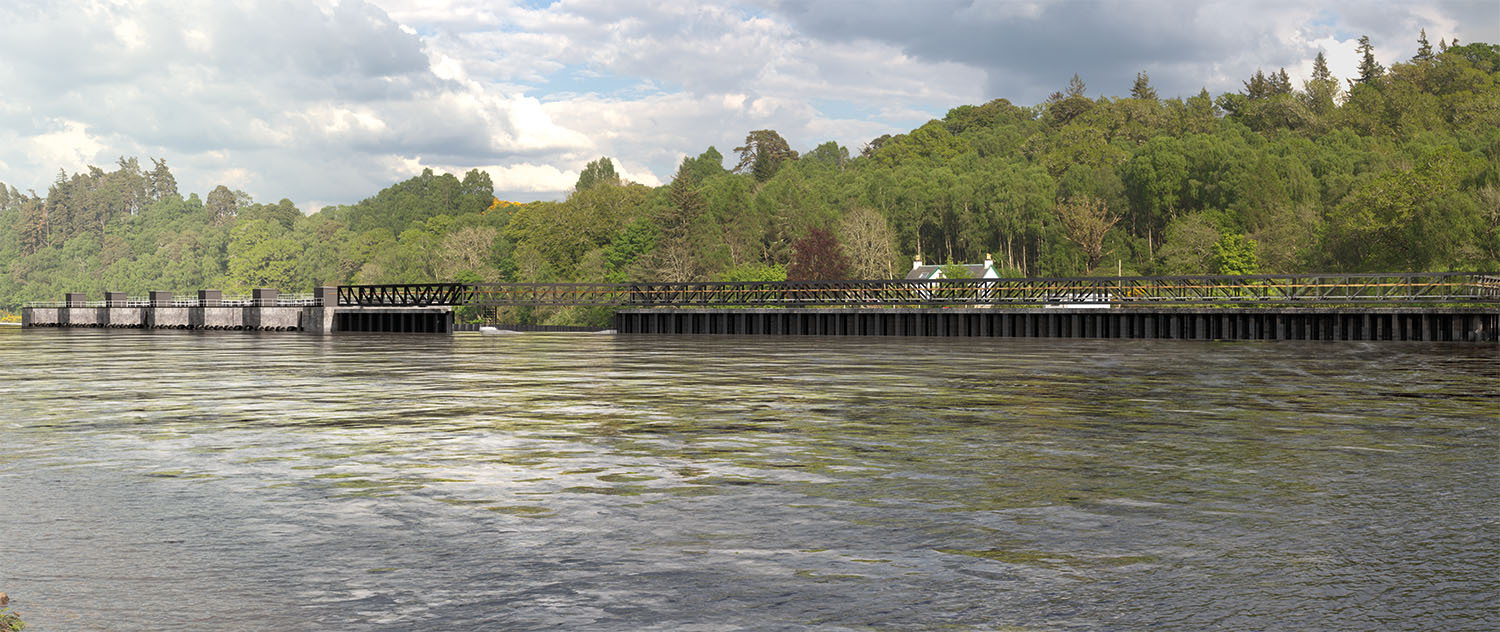
Visualisation of the proposed Ness Weir II modifications, from the A82, 10 years post construction
Improved flood control
The updated weir design enhances the flood control system through:
- Adjustable control gates on the service weir and Dochgarroch eastern embankment allow for dynamic water level management.
- An intelligent control system that uses pre-release and flood forecasting to proactively manage water levels in Loch Ness in advance of planned events. This means the weir can be gradually lowered over several days to reduce water levels in Loch Ness and Loch Dochfour, helping to manage flood risk proactively.
- Integration with existing hydrological systems to balance ecological needs with flood resilience.
These upgrades will enhance flow control and operational flexibility.
Support for water sports
The modified weir continues to support recreational use in several ways:
- When water levels are high, canoeists and kayakers can slide over the service weir, as they do currently.
- The new fish pass offers an additional safe route for water sport users to access the River Ness.
- The design ensures safe gradients and flow conditions for both ecological and recreational use.
Enhanced fish passage
One of the primary concerns raised during our 2024 consultation was the need for improved fish migration facilities. The updated design includes a new, purpose-built fish pass that allows salmon and other species to safely navigate upstream and downstream.
Statera are engaging with the Ness District Salmon Fisheries Board, NatureScot, and SEPA to ensure the fish pass meets ecological standards and supports biodiversity.
Access
Following concerns around access during construction, the project is proposing multiple access routes during construction, both over land and over water, in an effort to minimise the impacts on the public road networks and private roads. Statera plan to:
- Make use of barges on the Caledonian Canal where possible to transport bulk material and large components, reducing stress and disruption on the local road network.
- Create separate temporary construction compounds for access from both the A82 and B862, reducing the risk of disproportionate impacts to road users in a single location.
- Enable a dedicated construction access road from the B862 to reduce direct impact on residents living closest to the site.
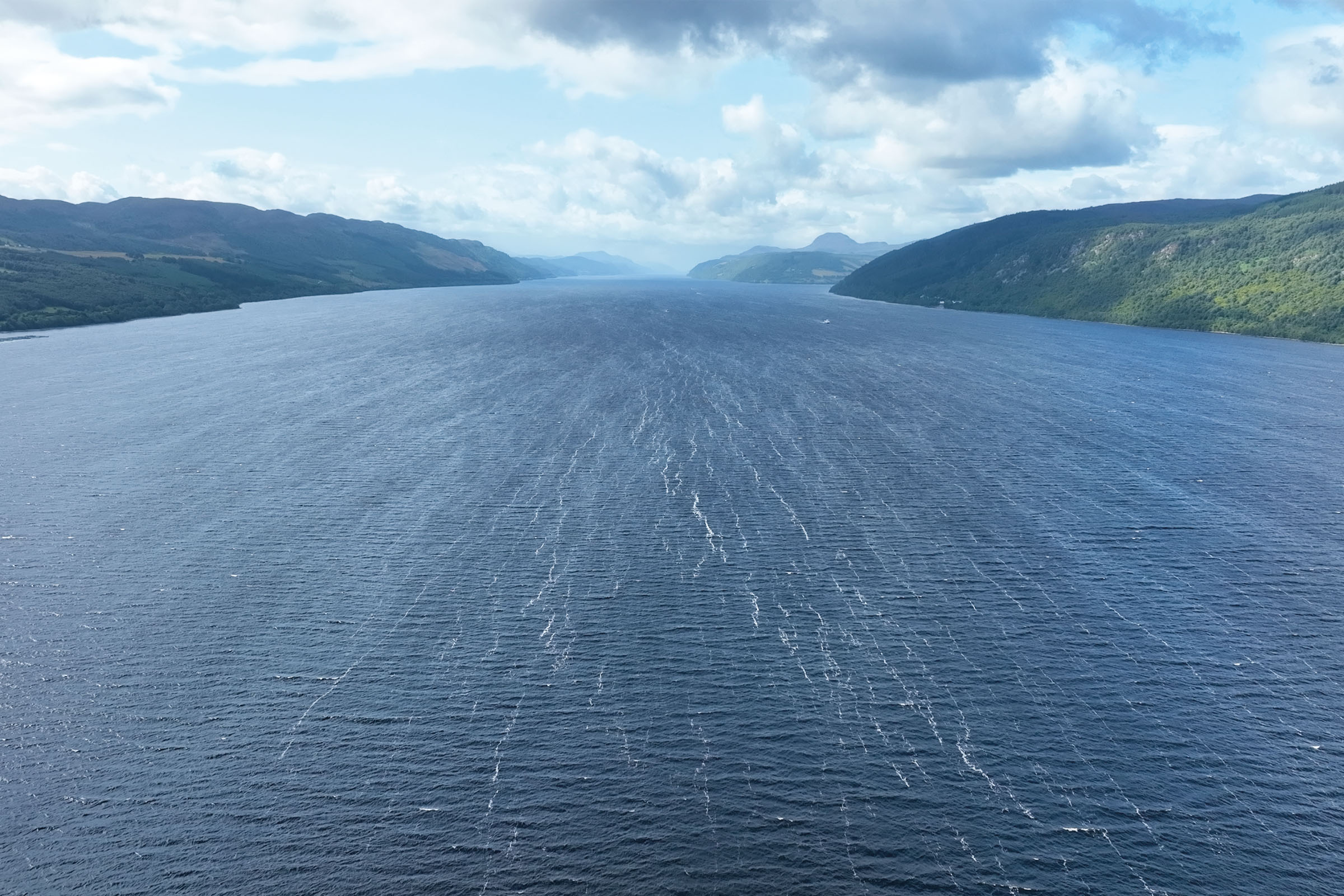
Lock Ness

Local and Regional Benefits
Ness Weir II presents a major opportunity to attract investment into the Highlands, not just in infrastructure, but in jobs, tourism, and innovation. By aligning with Scotland’s energy transition goals, it positions the region as a leader in sustainable development. At the same time, it ensures that environmental stewardship remains central, safeguarding Loch Ness and its surroundings for future generations.
Supporting clean energy by reducing curtailment of pumped storage hydro during low water levels
Pumped storage hydro (PSH) is a vital part of Scotland’s clean energy infrastructure, acting like a giant battery that stores excess renewable energy and releases it when demand is high. By improving water management and resilience, Ness Weir II will help ensure that PSH projects can continue to operate without interruption, reducing curtailment (wasted renewable energy) and supporting grid stability with low-carbon power.
Protecting Loch Ness by improving water resilience for all users and sensitive habitats
Loch Ness is not only iconic but ecologically and economically important. Enhancing water resilience means ensuring a more stable and sustainable water supply for everyone from local communities and tourism operators, to wildlife and fragile ecosystems. This upgrade supports biodiversity, helps mitigate the effects of climate change, and ensures that the loch remains a healthy and vibrant resource for generations to come.
Reducing flood risk to Inverness through the proposed operation of Ness Weir II
The proposed Ness Weir II would be operated in a way that helps regulate water flow more effectively, especially during periods of heavy rainfall. By controlling water levels upstream, the weir can reduce the risk of flooding in Inverness and surrounding areas. This not only protects homes and infrastructure but also reduces long-term costs associated with flood damage and insurance, while improving public safety.
Enabling greener construction by allowing freight to move via the Caledonian Canal, easing pressure on local roads
Using the canal network for transporting construction materials and equipment offers a low-carbon alternative to road freight. This shift reduces traffic congestion, lowers emissions, and minimises wear and tear on local roads. It also supports more sustainable construction practices, aligning with Scotland’s net-zero goals and improving air quality for nearby communities.
Community benefit
Statera Energy supports the Highland Council’s Social Values Charter for Renewable Energy, which encourages long-term, strategic investment in communities across the Highlands.
As part of its commitment to this Charter, Statera has ring fenced money towards a package of community benefits and strategic investments associated with its Loch Kemp Storage development. This includes funding for road infrastructure, port upgrades, canal repairs, housing investment, education, and environmental stewardship.
While the Ness Weir II proposal does not independently require a community benefit fund, Statera recognises the close geographical proximity and shared opportunities between the two projects. The company is therefore proposing that the Loch Kemp Storage fund be extended to also support community benefit initiatives for communities that may be affected by increased canal traffic from construction.
Statera Energy is committed to working collaboratively with local stakeholders to ensure this funding delivers meaningful outcomes. As the proposals progress, Statera will share more details and welcome community feedback on the types of initiatives this funding could support.
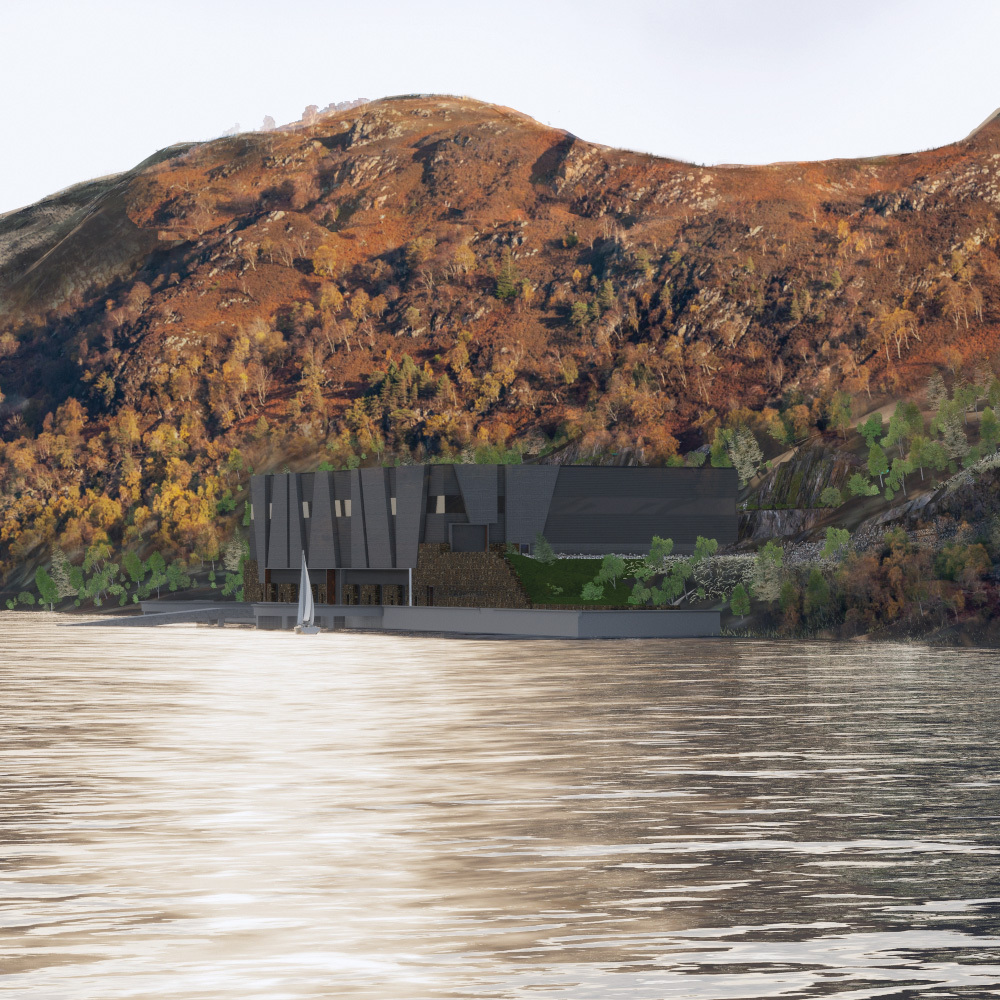
Loch Kemp Storage, Statera's proposed pumped storage hydro project on Loch Ness

Environmental Impact Assessment (EIA)
Before a project like this can go ahead, it's important to understand how it might affect the environment. That's where the Environmental Impact Assessment (EIA) comes in. The EIA looks at the possible environmental effects of the proposed development. It helps decision-makers understand these effects and make informed choices. It also helps identify ways to avoid, reduce, or offset any negative impacts.
Who's involved?
Statera Energy has appointed a team of independent qualified experts to advise on the environmental issues associated with the proposed modifications. These specialists will work with Statera Energy during the design process, carry out environmental impact assessment work, and will prepare chapters for inclusion in the EIA Report.

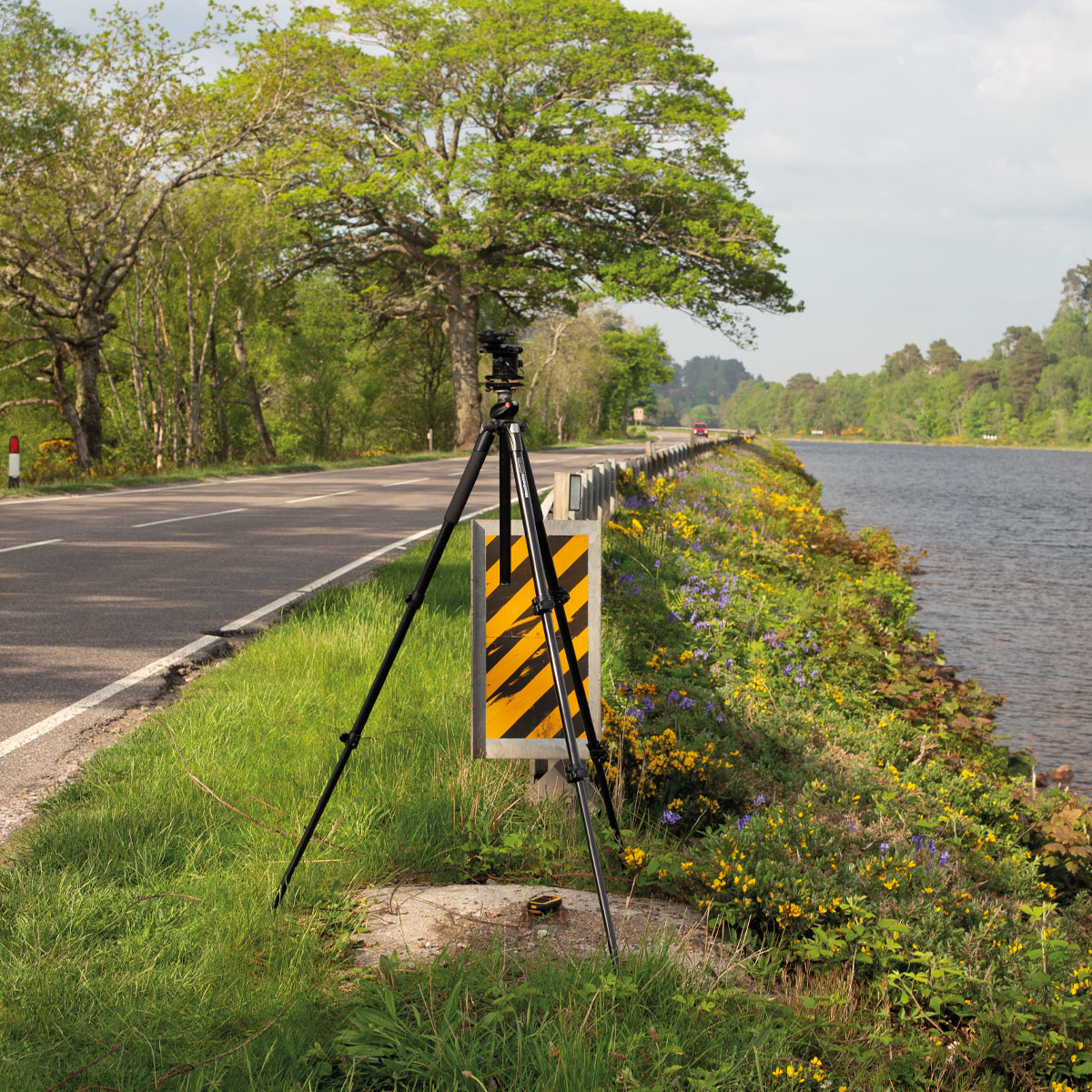
Photographs of environmental surveys being undertaken for the Ness Weir II EIA
What will the EIA include?
The EIA Report will be prepared in accordance with the EIA Regulations and current best practice guidance. It is anticipated that the EIA Report will be structured as follows:
Volume 1: Main Report
This volume will introduce the EIA Report, a description of the project, the alternatives considered, the EIA process and will report on the baseline environment, potential effects, mitigation and likely significant environmental effects across all EIA topics scoped into the assessment;
- Water management and flood risk.
- Landscape and visual.
- Land use and recreation.
- Terrestrial ecology.
- Ornithology.
- Aquatic environment and fish.
- Soil, geology and water environment.
- Cultural heritage.
- Noise and vibration.
Volume 2: Figures
This volume would provide supporting figures (primarily A3 size) to the assessments carried out as part of Volume 1.
Volume 3: Visualisations
This volume would provide visualisations of the Proposed Development from agreed viewpoint locations.
Volume 4: Technical Appendices
This volume would include supporting appendices to the assessments carried out as part of Volume 1, and other information such as scoping and consultation responses, and assessment methodologies.
Non-Technical Summary
A Non-Technical Summary would form part of the EIA Report, summarising the project and its likely significant effects.

Construction Process
Statera Energy has extensive experience delivering construction projects responsibly across the UK. The company prioritises working closely with local communities, respecting environmental and site constraints, and actively monitoring our construction activities to minimise disruption and ensure compliance.
The Ness Weir II proposal is still in development, and the construction approach may evolve as plans are refined. Statera is committed to keeping the community informed and involved as the project progresses, and welcome feedback throughout the consultation process. However, based on current expectations, engagement with contractors, and experience from the design consultants, the following steps are likely to be involved:
Cofferdam installation
To allow safe and dry working conditions, a cofferdam (a temporary watertight enclosure) would be installed around both the upstream and downstream sections of the existing weir. Water would be pumped out of this enclosure to expose the riverbed, enabling the installation of a new control structure within the existing weir.
Temporary fish passes
To maintain fish movement during construction, temporary fish passes will be installed. This ensures that aquatic life can continue to navigate the river while works are underway.
Environmental timing and controls
All in-river works will be carried out during designated periods approved under the project’s Controlled Activities Regulations (CAR) licence, which would be issued by the SEPA. These timings are informed by guidance from the local fisheries board to protect fish populations and river ecology.
Minimising disruption
Statera Energy is committed to reducing the impact of construction on the local community. Where possible, the company will make use of the Caledonian Canal to transport large and heavy materials, helping to alleviate pressure on the local road network and reduce traffic-related disruption.
Project duration
Due to the seasonal restrictions and the complexity of the works, the construction phase is expected to take between 2 and 4 years to complete.
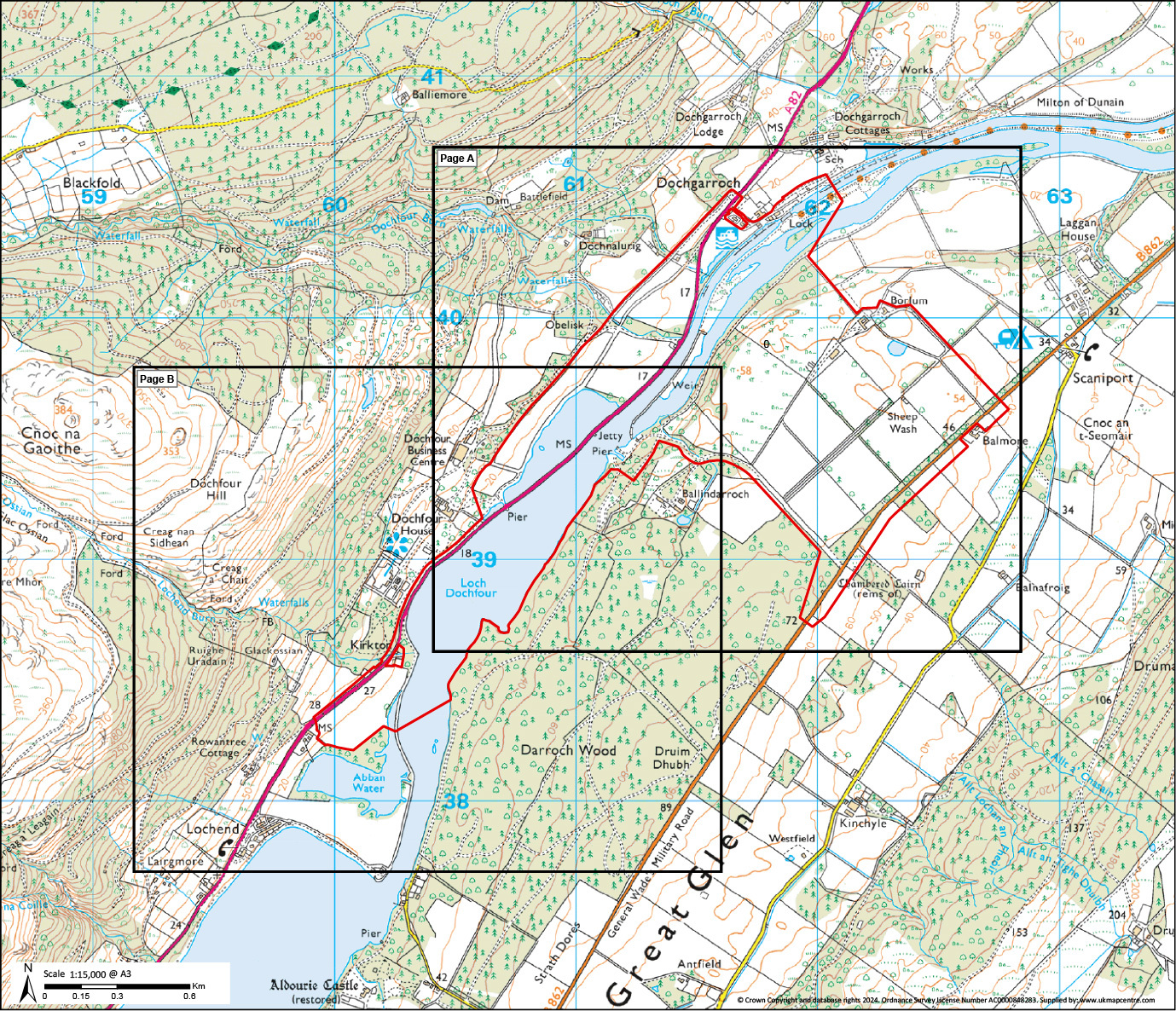
Red line boundary for proposed developments, showing potential points of access

Who We Are About Statera
Statera Energy develops and operates energy assets critical for balancing a renewables-led power system, strengthening UK energy security and supporting the low-carbon transition.
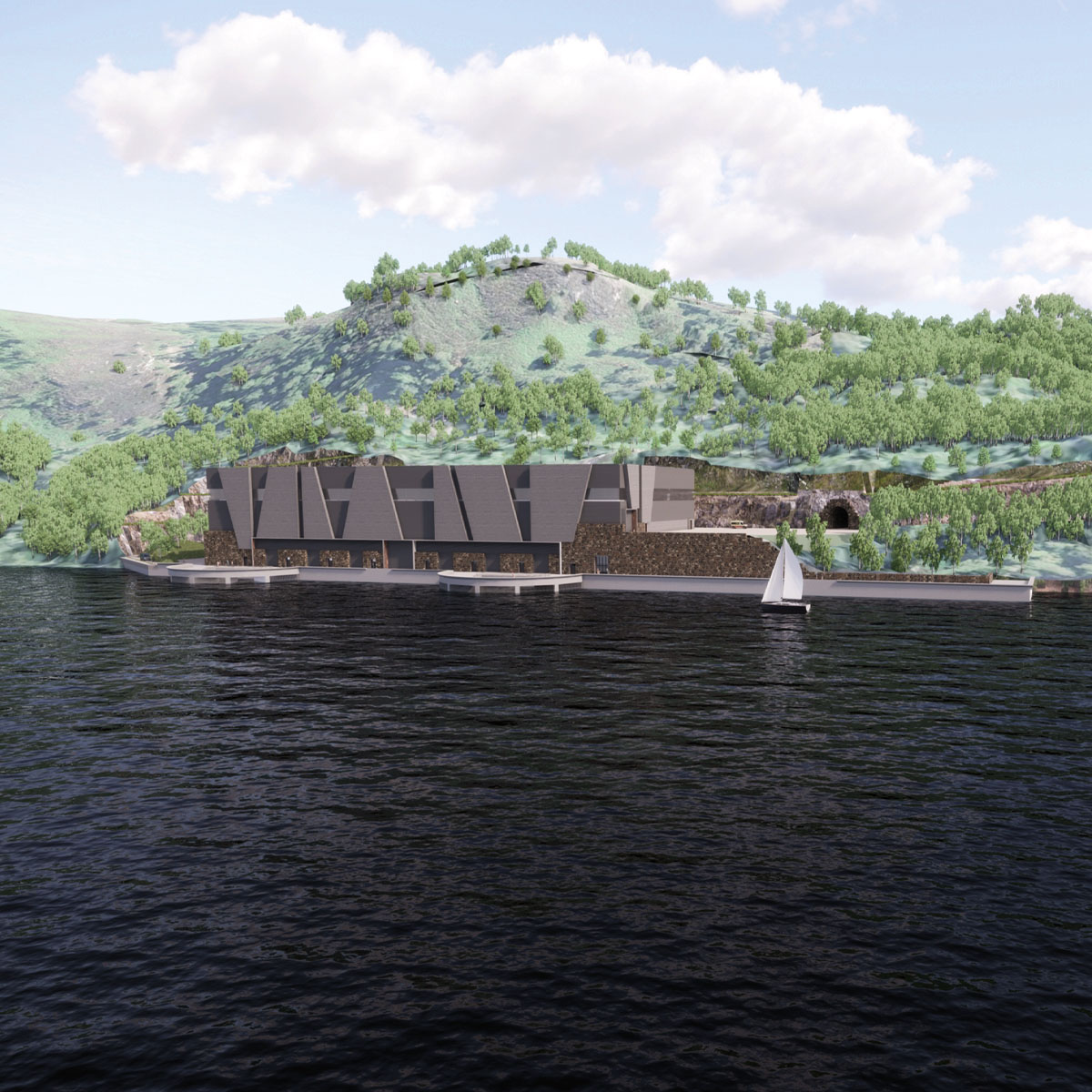
Loch Kemp Storage
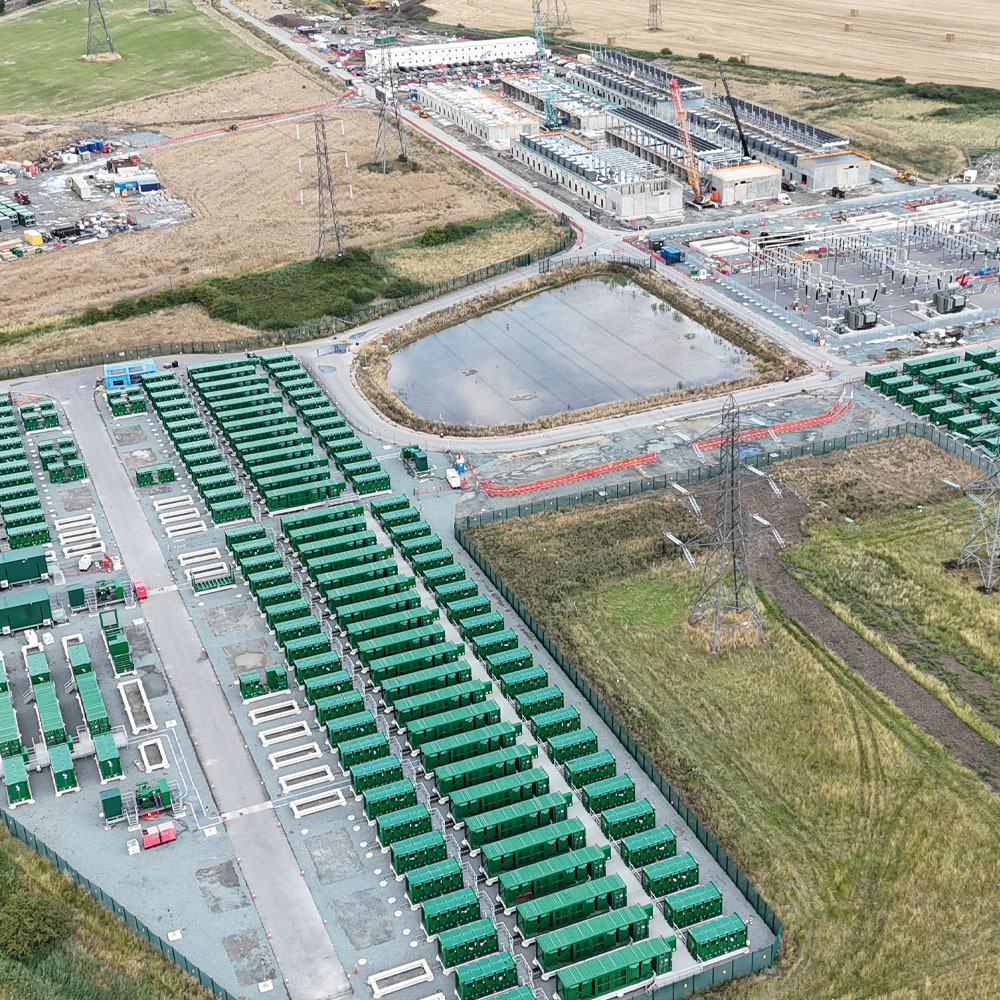
Thurrock Storage
Founded in 2015, Statera Energy has rapidly progressed development of flexible generation, battery storage, pumped storage hydro and hydrogen assets – positioning Statera at the forefront of the grid‑balancing infrastructure needed for a renewables‑led future.
Scotland is playing a pivotal part in the net zero transformation of the UK energy system. Its location relative to the rest of the UK, as well as its natural features, mean Scotland has a nationally important role in delivering net zero. With its heritage as an energy leader, Scotland’s workers have the knowledge and expertise to deliver and operate these important projects, securing Scotland’s role in the energy transition. Statera is developing two nationally significant projects in Scotland.
As renewable generation grows, so too does the need for flexible technologies that can balance supply and demand across seasons.
Pumped storage hydro projects, like Statera’s Loch Kemp Storage, are a vital part of Scotland’s clean energy infrastructure, acting like a giant battery that stores excess renewable energy and releases it when demand is high.
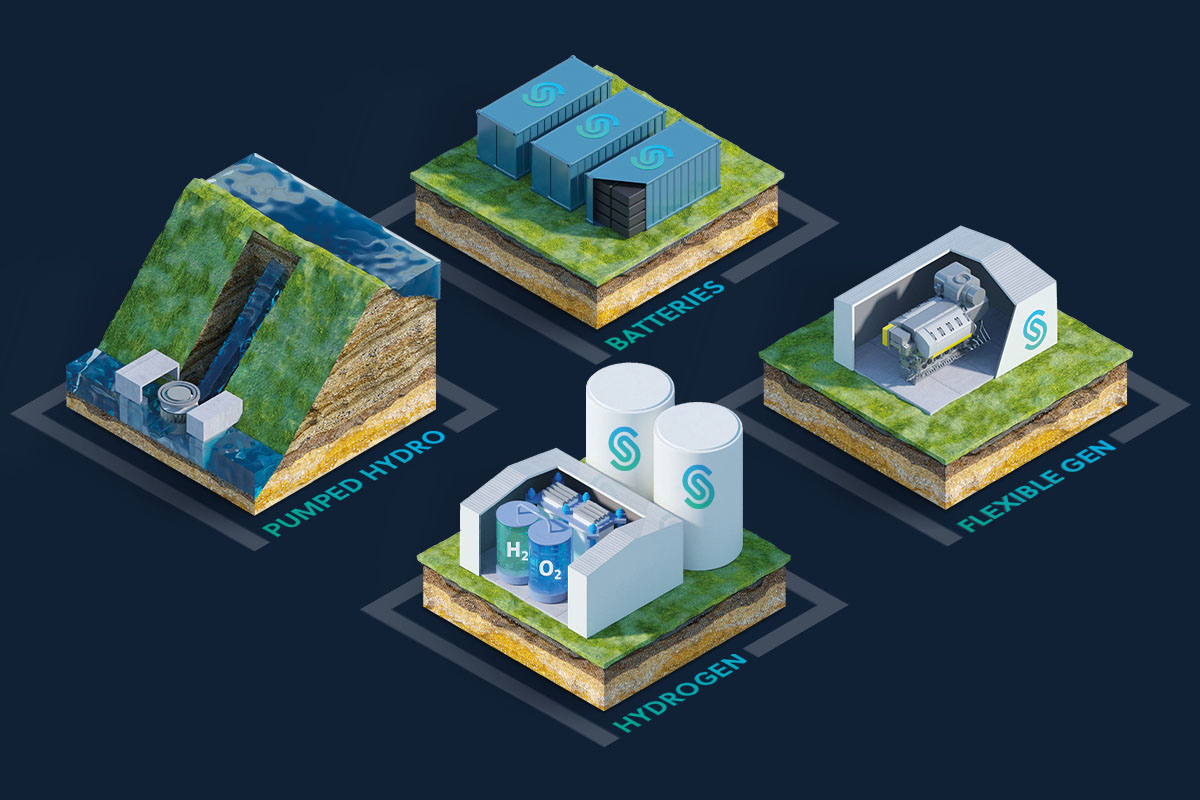

Feedback and Timeline
Thank you for visiting our public exhibition to find out more about the proposals for Ness Weir II. Please take the time to complete the feedback forms provided to let us know your view on the proposals.
Feedback
Share your views
You can provide your views by completing our feedback form. Please note that feedback can be provided up until 25th November 2025. If you have any further questions regarding any aspect of the proposals, please contact us via the details below.
Email: contact@nessweir2.co.uk
Post: Ness Weir II, C/O Cavendish, 220 St Vincent Street, Glasgow, G2 5SG
Phone: 0800 066 8943
Online: www.nessweir2.co.uk
How will feedback be used?
Feedback from this consultation, alongside the ongoing technical and environmental studies, will help shape and inform the proposals ahead of the next consultation.
Will you hold further consultations?
We will hold a second public consultation in December 2025. This will provide an opportunity for you to view the updated proposals, including changes that have been made following feedback received.
Please note
Any comments made to the Ness Weir II project team are not representations to the Planning Authority. If a planning application is subsequently submitted to the Highland Council, normal neighbour notification and publicity will be undertaken and the public will have the opportunity to make formal representations on that planning application at the time.
Timeline
Proposal of Application Notice submitted to the Highland Council
October 2025
First round of public consultation
November 2025
Second round of public consultation
December 2025
Application submission to the Highland Council
Q1 2026
Construction begins
2027
Weir fully operational
2030